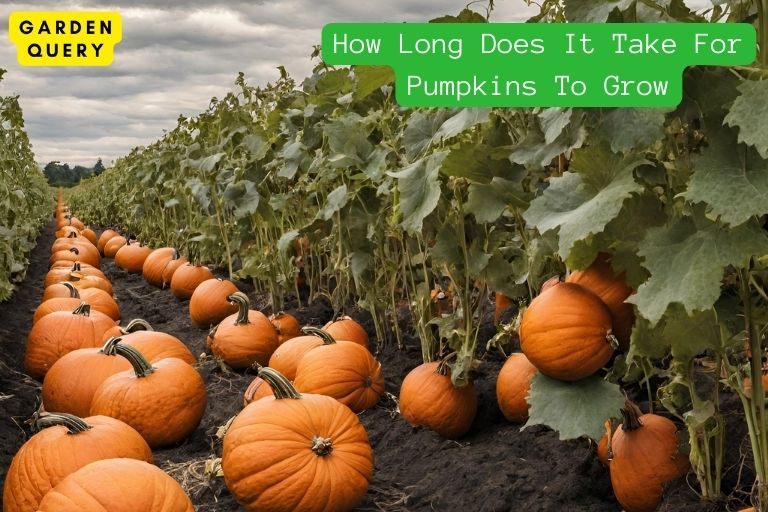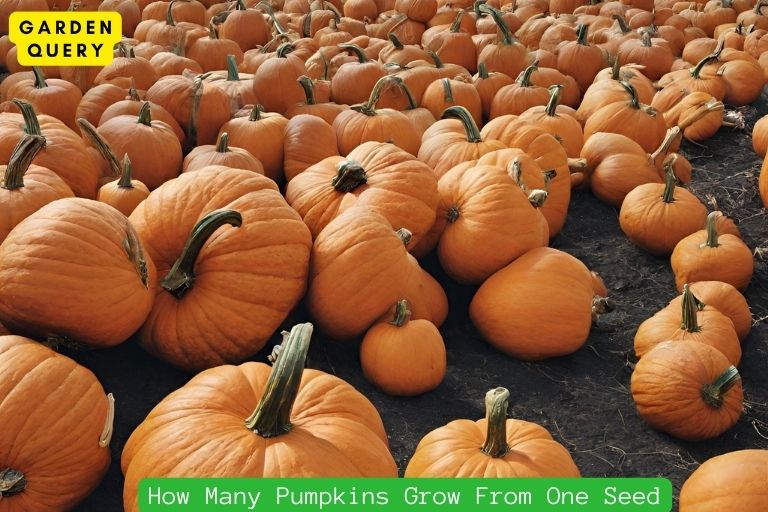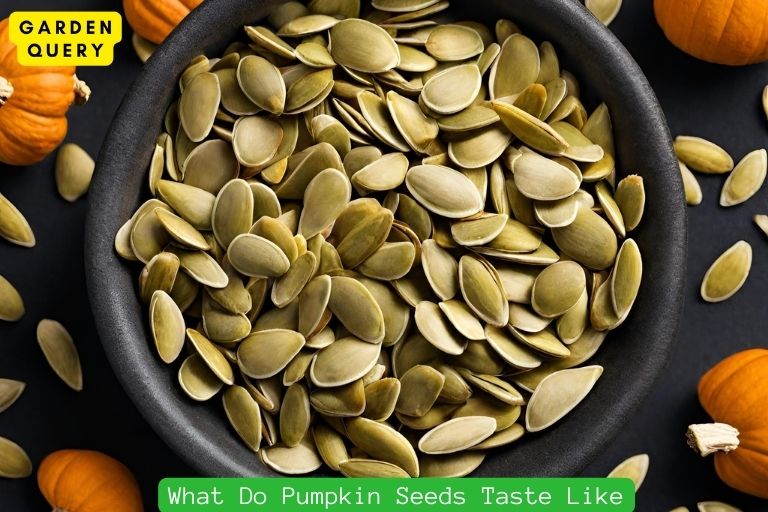How Long Does It Take For Pumpkins To Grow?
Pumpkins typically take 75 to 100 days to grow from seed to maturity, but this duration can vary based on the pumpkin variety and growing conditions.
The growth timeline of pumpkins starts from seed planting to the maturity of the fruit.
On average, it takes around 75 to 100 days for pumpkins to complete their growth cycle, starting from seed germination to full maturity.
However, this duration can fluctuate based on various factors like the pumpkin variety, weather conditions, soil quality, and care provided.
Factors such as temperature, sunlight, water, and soil nutrients play vital roles in determining the growth rate of pumpkins.
Monitoring these conditions and selecting appropriate varieties can help optimize the growth period for pumpkins.
Key Takeaway
How Long Does It Take For Pumpkins To Grow?
Overview of pumpkin growth timeline
If you're dreaming of a pumpkin patch in your backyard or planning to grow pumpkins commercially, understanding the growth timeline is essential.
On average, it takes about 80 to 120 days for pumpkins to grow from seed to harvest.
The exact duration depends on various factors, including the pumpkin variety, weather conditions, and cultivation practices.

The growth timeline can be broken down into several stages:
- Seedling Stage: After planting the pumpkin seeds, it usually takes 7 to 14 days for the seedlings to emerge from the soil. During this stage, it’s crucial to provide adequate moisture, sunlight, and nutrients to help the plants establish strong roots.
- Vine Growth: Once the seedlings have emerged, they will develop into sprawling vines that can span several feet in length. This growth typically takes around 2 to 3 weeks.
- Flowering: After the vines have grown, the pumpkin plants will produce bright yellow flowers. The flowers attract pollinators like bees, which are necessary for fertilization. It typically takes 2 to 3 weeks for the flowers to appear and be pollinated.
- Fruit Development: Following successful pollination, the pumpkins start to develop. Small green fruits will emerge from the pollinated flowers. Over the next few weeks, these fruits will grow larger and change color as they mature.
- Harvest: The final stage is the harvest, which usually occurs around 80 to 120 days after planting the seeds. Harvesting should take place when the pumpkins have reached their full size and have a hard rind. It’s important to harvest before the first frost to prevent damage to the pumpkins.
Factors that affect pumpkin growth and development
Several factors can influence the growth and development of pumpkins:
- Temperature: Pumpkins thrive in warm temperatures between 70 to 85 degrees Fahrenheit (21 to 29 degrees Celsius). Extreme heat or cold can slow down growth or even damage the plants.
- Watering: Consistent and adequate watering is crucial for healthy pumpkin growth. The plants require approximately 1 inch of water per week, either from rainfall or irrigation.
- Soil Quality: Well-drained soil with a pH level between 6 and 7 is ideal for pumpkin cultivation. Adding organic matter and nutrients can enhance soil fertility and promote better growth.
- Pest and Disease Control: Common pests like aphids, squash bugs, and powdery mildew can pose a threat to pumpkin plants. Regular monitoring, proper pest management, and disease prevention practices are essential.
By understanding the growth timeline and factors that influence pumpkin growth, you’ll be better equipped to cultivate healthy and bountiful pumpkins.
Choose the appropriate pumpkin variety for your climate and provide proper care throughout the growing season.
Read More: Pumpkin
Germination Stage
Pumpkin seed germination process
The journey of a pumpkin begins with the germination stage, where the seed transforms into a tiny sprout.
The length of time it takes for pumpkins to grow largely depends on various factors, but the germination period typically lasts around 5 to 10 days.
During this time, the pumpkin seed absorbs water and swells, eventually cracking open to reveal the emerging sprout.
To successfully germinate pumpkin seeds, it is essential to provide them with the right conditions. Firstly, planting the seeds in a well-draining soil enriched with organic matter is crucial.
Planting them at a depth of about an inch and ensuring they receive adequate sunlight is also important for a successful germination process.
Optimal conditions and care during germination
To promote optimal germination, it is crucial to provide the right environment for pumpkin seeds to thrive.
Here are a few key factors to consider:
- Moisture: Maintaining proper moisture levels is vital for seed germination. The soil should be moist but not excessively wet, as excessive water can lead to rotting. Regular watering is necessary to keep the soil consistently damp.
- Temperature: Pumpkin seeds require warm soil for germination. The optimal temperature range is between 70°F to 90°F (21°C to 32°C). Using a seedling heat mat or starting seeds indoors can help maintain the ideal temperature.
- Air circulation: Good air circulation is essential to prevent the growth of mold and other pathogens. Proper spacing between seeds and providing adequate ventilation can promote healthy growth.
- Protection from pests: It’s important to protect the young seedlings from pests such as birds, squirrels, and insects. Covering the seeds with a thin layer of netting or using deterrents can help prevent damage.
Once the pumpkin seeds have successfully germinated and sprouted, they will enter the growth stage. From there, pumpkins generally take around 80 to 120 days to fully mature.
During this period, regular watering, fertilizing, and protecting the plants from extreme weather conditions are crucial for healthy growth and bountiful harvests.
The germination stage is a vital part of the pumpkin’s growth cycle.
By providing the optimal conditions and care, gardeners can ensure successful germination and pave the way for healthy pumpkin plants that will yield an abundance of beautiful and delicious pumpkins.
Read More: How Do Pumpkin Vines Grow?
Vegetative Stage
When it comes to growing pumpkins, many people may wonder how long it takes for these vibrant orange fruits to reach maturity.
Well, it all begins with the vegetative stage, where the pumpkin plant goes through significant growth and leaf development.
Pumpkin plant growth and leaf development
During this stage, which typically lasts for around 2 to 3 weeks, the pumpkin plant focuses on establishing its root system and developing its leaves.
The roots grow deep into the soil, providing stability and absorbing water and essential nutrients.
Simultaneously, the plant’s leaves emerge and expand, harnessing sunlight to fuel photosynthesis, the process that converts light energy into chemical energy.
To ensure that your pumpkin plant grows healthy and robust during this stage, it is crucial to provide adequate irrigation, nutrients, and sunlight.
Regular watering, around 1 inch per week, is sufficient, but make sure you don’t overwater, as damp conditions can lead to root rot.
Applying a balanced fertilizer can also promote optimal growth. Moreover, ensuring that the plant receives at least 6-8 hours of direct sunlight daily is vital for photosynthesis.
Managing pests and diseases during this stage
The vegetative stage is also a critical time to safeguard your pumpkin plant against pests and diseases that could hinder its growth.
Common pests like aphids, squash bugs, and cucumber beetles can cause damage to the leaves, stems, and even the fruits.
Regularly inspecting the plant and using organic insecticides or implementing natural pest control methods can help prevent infestations.
In terms of diseases, powdery mildew and downy mildew are common challenges during the vegetative stage.
Applying fungicides and maintaining good air circulation can help manage these diseases. Also, removing any infected plant parts promptly can prevent the spread of fungal infections.
By providing the right conditions and protecting your pumpkin plant from pests and diseases during the vegetative stage, you are setting the foundation for a successful harvest.
After this stage, the pumpkin plant will enter the flowering stage, followed by fruit development.
The total time it takes for pumpkins to grow from seed to maturity can vary depending on the specific pumpkin variety and environmental conditions.
Having a good understanding of the different growth stages and proper care practices will greatly contribute to a bountiful pumpkin harvest.
Read More: How Do Pumpkin Seeds Grow?
Flowering Stage
Gardening enthusiasts and pumpkin lovers eagerly await the arrival of pumpkin season. But have you ever wondered how long it takes for pumpkins to grow?
Pumpkin flower formation and pollination
Pumpkin flowers are essential for the fruiting process. These bright, yellow flowers emerge from the vine, signaling the beginning of the pumpkin’s growth cycle.
Typically, pumpkin vines produce separate male and female flowers.
Male flowers appear first, and their primary function is to provide pollen. Female flowers appear shortly after and feature a small fruit at the base, symbolizing the potential for pumpkin development.
Pollination is crucial to ensure successful fruit formation.
Insects, predominantly bees, play a vital role in pumpkin pollination. Bees transfer pollen from the male flowers to the female flowers as they visit each bloom.
This process triggers fertilization, enabling the pumpkin to grow and mature into a full-size fruit.
Tips for ensuring successful pollination
While nature takes care of the pollination process, there are a few steps you can take to increase the chances of successful fruit formation:
- Attract pollinators: Plant flowers that attract bees and other pollinators near your pumpkin patch. Marigolds, sunflowers, and lavender are popular options. These flowers provide a food source for bees and encourage them to visit your pumpkin plants.
- Encourage bee activity: Provide a water source, such as a shallow dish filled with water and rocks, for bees to drink from. Bees also appreciate a pesticide-free environment, so avoid using harmful chemicals near your pumpkin plants.
- Hand pollination: If you notice a lack of bee activity or want to ensure successful pollination, you can resort to hand pollination. Gently brush the stamen of the male flower to collect pollen and transfer it to the stigma of the female flower.
By following these tips, you can help ensure a higher rate of successful pumpkin pollination, leading to more pumpkins for harvest.
Patience is key when it comes to pumpkins. After pollination, the fruit will gradually grow and mature over time.
The duration from flower formation to harvest-ready pumpkins typically ranges from 45 to 55 days, depending on the pumpkin variety and environmental conditions.
So, now you have a better understanding of how long it takes for pumpkins to grow.
Enjoy the journey and anticipation as you watch these vibrant fruits develop in your garden, ready to be transformed into delicious pies, decorations, or carved masterpieces come autumn!
Fruit Development Stage
Pumpkins are a beloved symbol of the fall season, and growing them can be a rewarding experience. But how long does it actually take for pumpkins to grow?
Stages of pumpkin fruit development
- Flowering stage: This is the first stage of pumpkin development, where the plant produces yellow flowers. It is crucial for pollination to occur during this stage for the formation of fruits.
- Fruit set stage: After successful pollination, the fertilized flowers develop into small green fruits. During this stage, it is important to provide the plant with proper water, sunlight, and nutrients to support fruit growth.
- Growth stage: As the fruits continue to grow, they change in color from green to orange or other shades, depending on the pumpkin variety. This stage can last anywhere from 45 to 55 days, depending on the variety and growing conditions.
- Ripening stage: The final stage of pumpkin development is when the fruit reaches full maturity and is ready for harvest. The skin becomes hard and the stem begins to dry out. This stage typically takes 10 to 20 days from the end of the growth stage.
Factors that influence pumpkin size and shape
- Variety: Different pumpkin varieties have varying growth rates and sizes. Some varieties are naturally smaller, while others can grow to impressive sizes.
- Genetics: Genetic factors play a significant role in determining pumpkin size and shape. Selecting high-quality seeds from reputable suppliers can increase the chances of growing larger and more uniform pumpkins.
- Environmental conditions: Pumpkins thrive in warm weather with full sun exposure. The availability of water, nutrients, and proper soil pH also impact their growth. Adequate spacing between plants allows for proper air circulation and prevents overcrowding.
- Cultural practices: Regular watering, fertilizing, and pest control are essential for optimal pumpkin growth. Pruning or removing excess fruit can also help redirect plant resources and promote larger fruit development.
While the exact timing of pumpkin growth varies depending on the factors mentioned, on average, it takes between 80 to 120 days from sowing the seeds to the fully ripened stage.
It's important to note that these time frames are approximate and can vary based on the specific pumpkin variety and growing conditions.
So, if you’re planning to grow your own pumpkins, be patient and provide them with the proper care they need.
With time, you’ll be rewarded with beautiful, ripe pumpkins to enjoy during the autumn season.
Maturation and Harvesting
For those with green thumbs and a love for autumn, growing pumpkins can be an exciting and rewarding experience!
From planting the seeds to taking care of the vines, every stage has its own unique charm. But how long does it actually take for pumpkins to grow and become ready for harvest?
Signs of pumpkin maturity
Before harvesting your pumpkins, it's crucial to determine their maturity.
Here are some signs to look out for:
- Color: Pumpkins typically change color as they mature. Most varieties turn from green to their distinct orange hue when they are fully ripe. However, some pumpkin varieties may remain green, so it’s important to refer to the specific characteristics of the variety you are growing.
- Firmness and skin: A mature pumpkin will have firm skin that is resistant to scratches or punctures. The skin should also have a dull appearance, rather than a shiny or glossy one. If the skin is too soft or easily damaged, the pumpkin may not be fully mature.
- Stem: The stem of a mature pumpkin should be dry and firmly attached to the fruit. If the stem is green and easily breaks off, the pumpkin may not be ready for harvest.
Harvesting techniques and timing
Once your pumpkins have reached maturity, it’s time to harvest them! The timing for harvesting can vary depending on the variety and growing conditions.
You should aim to harvest your pumpkins when they are fully mature but before the first frost.
To harvest your pumpkins, follow these steps:
- Cut the stem: Use a sharp knife or shears to carefully cut the stem about 2-3 inches above the pumpkin. Avoid pulling or twisting the stem, as this can lead to damage or rotting.
- Handle with care: When handling the pumpkins, avoid putting pressure on the fruit itself. Instead, hold the pumpkin by the stem or cradle it with both hands to prevent any accidental damage.
- Cure the pumpkins: After harvesting, it’s important to cure the pumpkins to enhance their flavor and prolong their shelf life. Place them in a warm, dry area with good airflow for 10-14 days. This process helps the outer skin harden and reduces the risk of rotting.
Now that you know how long it takes for pumpkins to grow and how to determine their maturity and harvest them, you can confidently enjoy the bountiful harvest from your pumpkin patch.
Summary
The journey of pumpkin growth encompasses a timeframe of patience and nurturing care, influenced by diverse factors.
Understanding the varying growth timelines among pumpkin varieties and the significance of environmental conditions sheds light on the intricacies of their development.
By providing optimal conditions and closely monitoring their progress, enthusiasts can witness the gradual transformation of pumpkin seeds into fully ripened fruits, ultimately reaping the rewarding harvest after the waiting period.
- Best Therapists In Dallas - February 1, 2024
- Holly Willoughby Husband: Holly Willoughby’s Love Story - January 30, 2024
- Holly Willoughby Dress: 5 Style Secrets and 7 Must-Know Career Milestones - January 30, 2024





